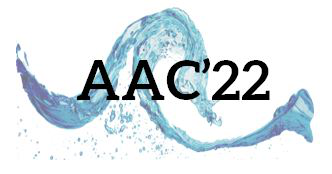Speaker
Description
The ATF's long-wave infrared (LWIR) laser produces optical pulses that enable substantially different acceleration regimes compared to near-infrared lasers. A 2 ps pulse duration and 5 TW peak power at 9.2 μm are presently the best demonstrated performance of this laser. This is achieved via chirped-pulse amplification of a microjoule seed pulse in a series of two high-pressure, mixed-isotope CO2 laser amplifiers operating at the 9R branch of the CO2 gain spectrum.
Combining the spectral bandwidth of the 9R and 9P branches will reduce the pulse duration to 500 fs while preserving the pulse energy, thus increasing the peak power by a factor of four. The central wavelength of such a laser would be 9.3 μm. One prerequisite for the proposed laser’s development is the increase in the energy of a seed laser to a millijoule level. Several schemes for generating high-energy LWIR seed pulses are currently being investigated. Nonlinear post-compression in bulk materials demonstrated recently in the sub-TW LWIR regime has the potential to further reduce the pulse duration to a few optical cycles (one cycle at 9.3 μm is 31 fs).
Achieving reliable 24/7 operation at a high repetition rate for future accelerators requires a quantum leap in the technology for pumping the high-pressure-gas active medium. In this regime, optical pumping at 4.3 or 2.8 μm is a promising alternative to electric discharge pumping. A kilojoule of optical energy must be deposited in the active medium of the CO2 amplifier within a microsecond for multi-terawatt LWIR operation. Emerging mid-infrared sources, such as Fe:ZnSe laser and GaSb laser diodes, may help to overcome this challenge in the foreseeable future.
Acknowledgments
US Department of Energy Office of Science DE-SC0012704
US Department of Energy ARDAP grant B&R #KW010102

